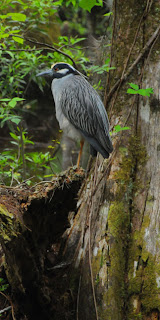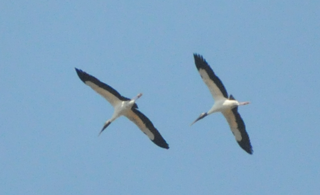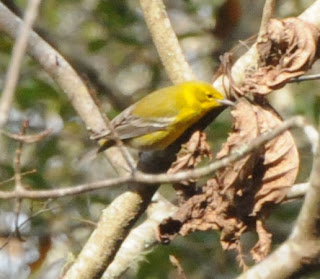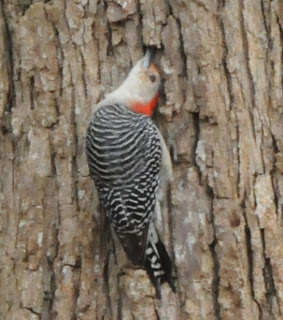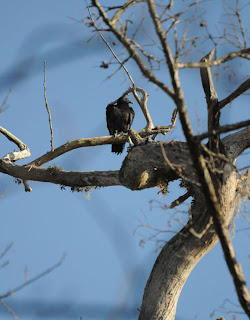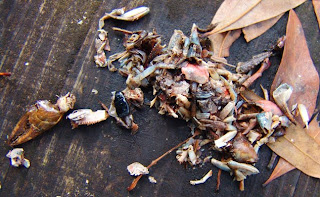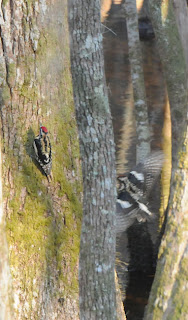
The holiday break is over and it's time to get back to work at the Audubon Center at
Francis Beidler Forest. Opening today's paper only highlighted how much work still needs to be done. On the front page of the local section,
The Post and Courier ran these images with a brief description.
What's wrong with this picture? The caption in the paper left no doubt as it noted that "some dog owners braved the wind and cold Sunday on Folly Beach and released their pets to chase birds..." There is never a good time of year to allow dogs to chase birds on the beach, but certainly not when even dog owners need to brave the wind and cold. The various species of shore birds are hunkered down on the beach conserving energy and avoiding the same wind and cold! Each time dogs or humans flush the birds into the air (remember, it's cold and windy), the birds consume valuable energy they require to survive the winter! Imagine every 15 minutes being rousted from your bed and chased out into your yard to run around in the cold and wind for a few minutes. How many times would you allow that to happen before crying foul? (pun intended)
Enjoy the beach, even in winter, but realize that you are the guest and please respect the residents...they're lives depend on it.
Photo by Brad Nettles




